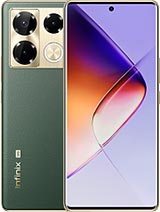Flashback: Motorola RAZR V3 - the little clamshell that could

Can a phone be too successful? It’s a weird thing to think about, but the Motorola RAZR may have been so successful that it tanked its parent company. Motorola invented the cell phone and the StarTAC was one of the very first flip phones. However, the most memorable phone it made is certainly the original RAZR.
Confusingly called “V3”, it came out in 2004. It had a sleek profile and was marketed as a fashion phone. While it started off as a premium device, its price fell over time and two years after launch Motorola had sold 50 million units.
Motorola kept the RAZR V3 around for four years and sold a whopping 130 million units over that period. Even by today’s standards that’s wildly impressive. Update cycles were slower back then, but four years is still a long time. We can hardly blame Motorola for keeping it up as long as it did though, the phone was selling like hotcakes.
And it propped up Moto’s market share – the company was one of the largest phone makers in the world, second only to Nokia. However the signs of its decline were already starting to appear. But before we cover the bitter end, let’s first explore why the phone was so successful.
The Moto RAZR V3 was the thinnest clamshell at the time at 13.9mm. You may scoff at the number now, but popular bar phones at the time were considerably thicker – e.g. the Sony Ericsson K700 and Nokia 7610 both measure 19mm thick.
The RAZR was the definition of sleek. The anodized aluminum chassis and the metallic keyboard gave it a premium feel and the trademark bulge at the bottom made for a very powerful loudspeaker (and it helped balance the weight distribution).

Gorgeous as it was, the phone was a bit of an airhead – perhaps not by 2004 standards, but by 2006 it was starting to feel limited. It had only 2G connectivity and a simple WAP browser, a basic 0.3MP camera and barely any storage.
In 2005 Motorola released a slightly revamped version – the RAZR V3i – which fixed some of these complaints. It bumped the camera to 1.23MP and added a microSD slot. However, the browser and connectivity didn’t get much of a boost, Motorola didn't even give it EDGE.
Interestingly, the V3i came out in the middle of Motorola’s partnership with Apple. So the phone had two versions – one with iTunes and one with the Moto audio player. Like the previous version, the V3i didn’t have an audio jack so you had to use the included headphones that ended in a miniUSB.

The iTunes model could sync music from your PC, but had a cap on how many songs it could hold at a time – 100 or 50, depending on the region. The ROKR had a similar limit, Steve Jobs described it as an iPod shuffle inside a phone.
The true sequel, the Razr2 V8, wouldn’t arrive on the scene until 2007 (followed a few months later by the 3G-enabled V9). Motorola CEO Ed Zander compared the RAZR to the likes of Kleenex, Coke and the iPod – brand names that have become synonymous with their product category.
He also detailed a shift in strategy for the company, talking up advanced features like 3G connectivity and a new HTML browser – Moto phones will do more than look good. That was the plan, anyway.
By 2007, the price and thus profit margins from the RAZR were razor-slim (if you’ll pardon the pun). That hurt the company’s profitability, but the worst part of it all is that Motorola had no answer to the incoming wave of touch smartphones.
The iPhone came out in June 2007, around the same time as the Razr2. Browsing on a 2.2” screen didn’t cut it anymore and using a D-pad and a keypad felt drab. The future was pinch-zoom and Motorola was living in the past.
It did release the Motorola DROID (aka Milestone) in 2009 – complete with a license for the Star Wars-derived name and the backing of Verizon (the iPhone was still exclusive to AT&T). The droids couldn’t reverse the downward trajectory of Motorola and its phone division was sold off to Google.
In the end, it seems that Motorola was so scared of killing its golden goose and releasing new forward-looking models that it ended up killing its phone business instead. The RAZR may be due for a revival, however, as Motorola (now under Lenovo leadership) unveiled an alluring foldable phone with all the nostalgia-inducing details, down to the keyboard and bump at the bottom.
Related
Reader comments
- just a smile
- 05 Jun 2023
- vjq
It's a nice phone for people who are too broke to buy today's flip phones. It can stop them from whining.
- LizH
- 05 Oct 2021
- 4HB
Lol. Yeah, they did. Thousands of bar type phones, before, during, and after the Razr
- Brian
- 18 Feb 2020
- APC
I just wish someone would invent a phone that is all one piece doing away with that sqeaky breakable hinge.












 Xiaomi
Xiaomi Samsung
Samsung Apple
Apple Xiaomi
Xiaomi Infinix
Infinix


